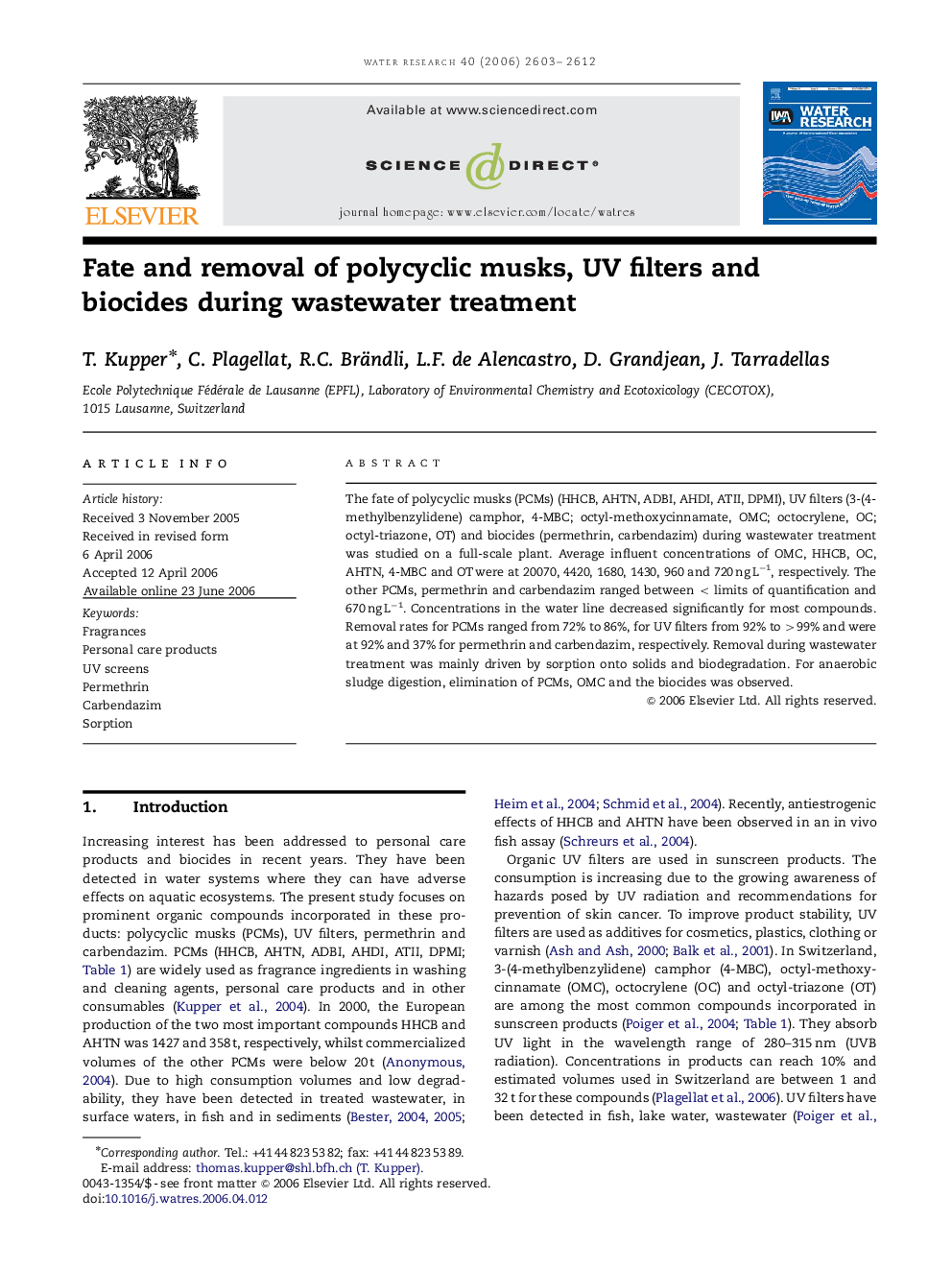| Article ID | Journal | Published Year | Pages | File Type |
|---|---|---|---|---|
| 4485690 | Water Research | 2006 | 10 Pages |
The fate of polycyclic musks (PCMs) (HHCB, AHTN, ADBI, AHDI, ATII, DPMI), UV filters (3-(4-methylbenzylidene) camphor, 4-MBC; octyl-methoxycinnamate, OMC; octocrylene, OC; octyl-triazone, OT) and biocides (permethrin, carbendazim) during wastewater treatment was studied on a full-scale plant. Average influent concentrations of OMC, HHCB, OC, AHTN, 4-MBC and OT were at 20070, 4420, 1680, 1430, 960 and 720 ng L−1, respectively. The other PCMs, permethrin and carbendazim ranged between < limits of quantification and 670 ng L−1. Concentrations in the water line decreased significantly for most compounds. Removal rates for PCMs ranged from 72% to 86%, for UV filters from 92% to >99% and were at 92% and 37% for permethrin and carbendazim, respectively. Removal during wastewater treatment was mainly driven by sorption onto solids and biodegradation. For anaerobic sludge digestion, elimination of PCMs, OMC and the biocides was observed.
